Civil Rights Trail
“We hold these truths to be self-evident, that all men are created equal, that they are endowed by their Creator with certain unalienable rights, that among these are Life, Liberty and the pursuit of Happiness.” Unfortunately, these historic words written July 4, 1776 haven’t always been true for some people who have had to toil throughout history to make this country a better place to live. Monuments to these struggles by African Americans, those interred in Japanese relocation camps, farmers fighting for better business practices, and the Native Americans who made the forced Trail of Tears march, make thought-provoking destinations, several of which can be found in The Natural State.
Little Rock
Constructed between 1899 and 1911, this Neoclassical building has provided a century of service since the legislature first met in the unfinished structure in 1911; features Arkansas granite, plus six bronze doors and three chandeliers crafted by Tiffany’s of New York. Guided or audio tours available. Fifty-one varieties of roses are found in the Capitol’s test gardens.

Bethel AME Church
Batesville
The Bethel African Methodist Episcopal Church is the oldest church structure in town which housed the first black congregation in Batesville; constructed with locally quarried stone, it dates to 1881-1882; listed on the National Register of Historic Places.
Eureka Springs
Historic Blue Spring, a stop on the Trail of Tears, pours 38 million gallons of water each day into its trout-stocked lagoon. View the historic film, stroll the garden paths and visit the bluff shelter on the National Register of Historic Places.

Centennial Baptist Church
Helena-West Helena
The only known Arkansas example of an African-American church designed by an African-American architect, now a National Historic Landmark. A one-story brick structure built in 1905 from a Gothic Revival design by African-American architect Henry James Price. Dr. Elias Camp Morris, who served as pastor from 1879 until his death in 1922, national significance comes from his leadership of the National Baptist Convention, the largest African-American organization in the United States at the end of the 19th century.
Little Rock
The Clinton Presidential Center is the home of the Little Rock offices of the Clinton Foundation, the Clinton Presidential Library and Museum, and the Clinton School of Public Service, the first institution in the nation to offer a Master of Public Service (MPS) degree. The Center is a world-class educational and cultural venue offering a variety of educational programs, special events, exhibitions, and lectures, presenting a unique perspective of the work – past, present, and future – of the 42nd President of the United States, William Jefferson Clinton.

Helena-West Helena
Exhibits that chronicle the history and lifestyles of the Delta. A highlight is a music exhibit featuring blues and other music of the area. One part of the center is located in the restored 1912 train depot where bluesmen once played, recalls “Sunshine” Sonny Payne, legendary announcer of the “King Biscuit Time” radio show. “They would come off the plantations down in Elaine, Wabash, Marvell, and Turkey Scratch,” Payne says. “It was their way of letting off steam.” Other exhibits include The Civil War in the Arkansas Delta and A Heritage of Determination The legendary King Biscuit Time radio show is broadcast live from the center daily. Helena witnessed the forced migration of thousands of Cherokee along the "water route" to Indian Territory.
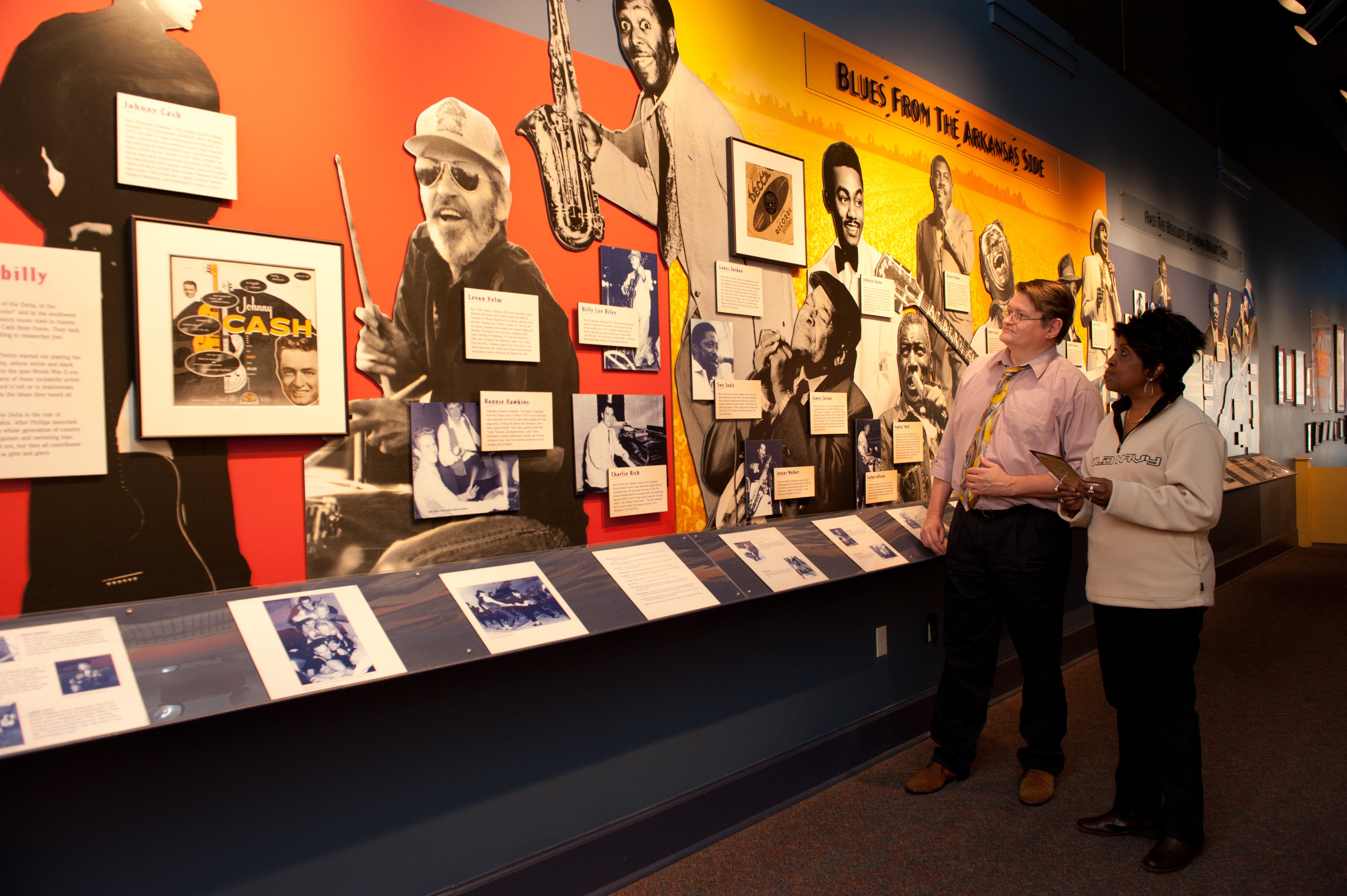
EMOBA (The Museum of Black Arkansans)
Little Rock
The Museum of Black Arkansans and Performing Arts has exhibits on prominent Black Arkansans and the African-American experience. Tours available by reservation; gift shop; call for hours of operation; special events scheduled throughout the year including the Haunted Cathedral in October.
Little Rock
Territorial Arkansas is preserved in this acclaimed restoration of 19th-century Little Rock homes including the city’s oldest building, the 1827 Hinderliter Tavern. Meet characters from the past or see pioneer demonstrations on the historic grounds. One of the country's best Bowie Knife collections, children's gallery, contemporary art gallery; Arkansas crafts store; seasonal special events. Arkansas Made Gallery showcases works made in Arkansas.
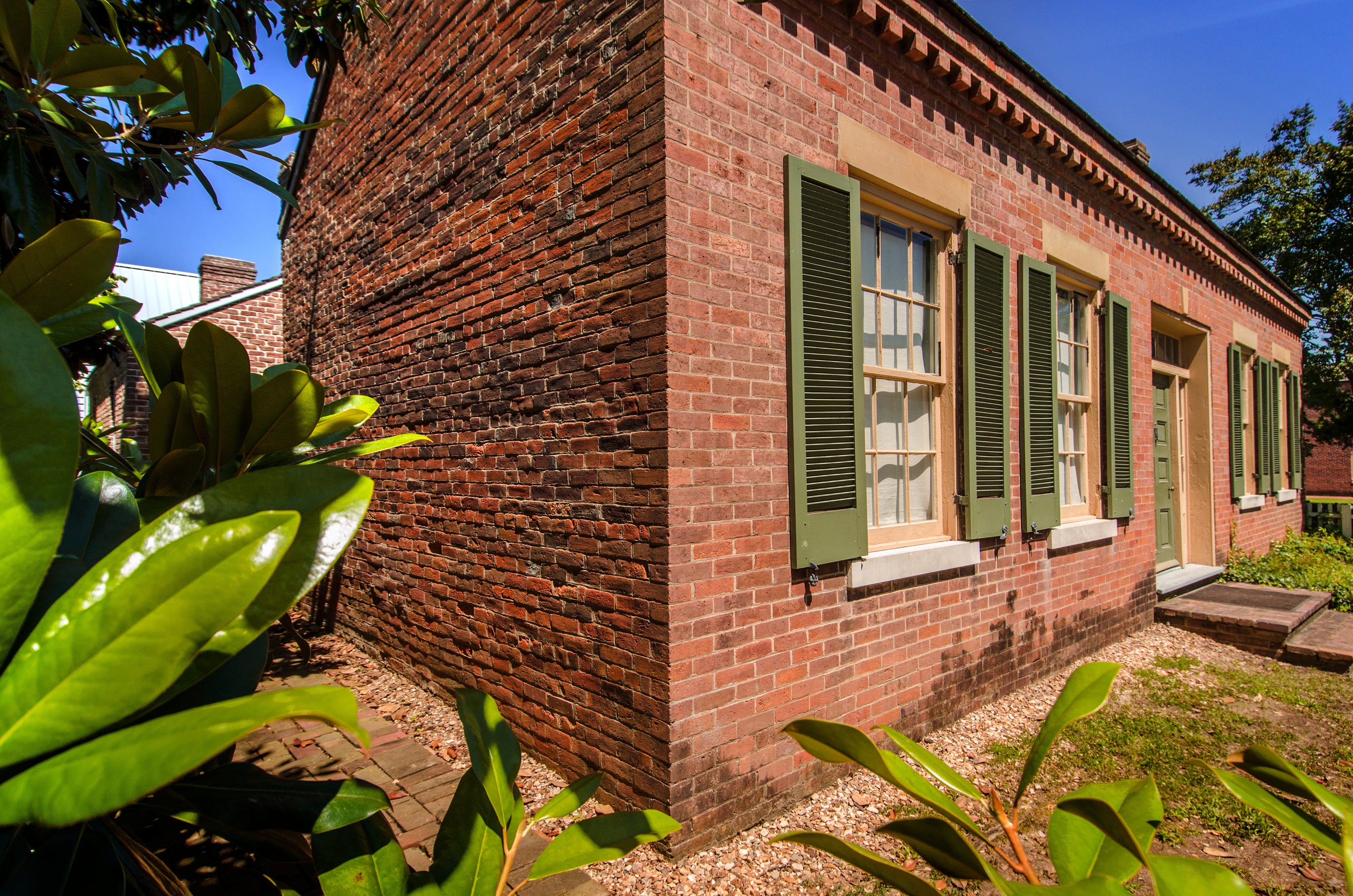
Jerome Relocation Center Historic Marker
Jerome
Granite marker commemorates site of a World War II relocation center for Japanese-Americans; a white fence, some foundations from some of the administration buildings and the one of the hospital laundry smokestacks are all that remain of a facility that houses 8,497 at its zenith. After closing, it was used as a German POW camp until the end of the war in Europe.
Helena-West Helena
The longest-running daily radio show in the United States, the legendary program is hosted by Blues Hall of Fame member “Sunshine” Sonny Payne. The first show aired on Nov. 21, 1941, and featured Sonny Boy Williamson and Robert Lockwood, Jr. The name came from the show’s sponsor, King Biscuit flour. Payne became full-time host in 1951 and continues to broadcast live from the Delta Cultural Center weekdays at 12:15. The Peabody Award-winning program has a worldwide audience via the Web. Visitors are welcomed to sit in and watch the live broadcasts.
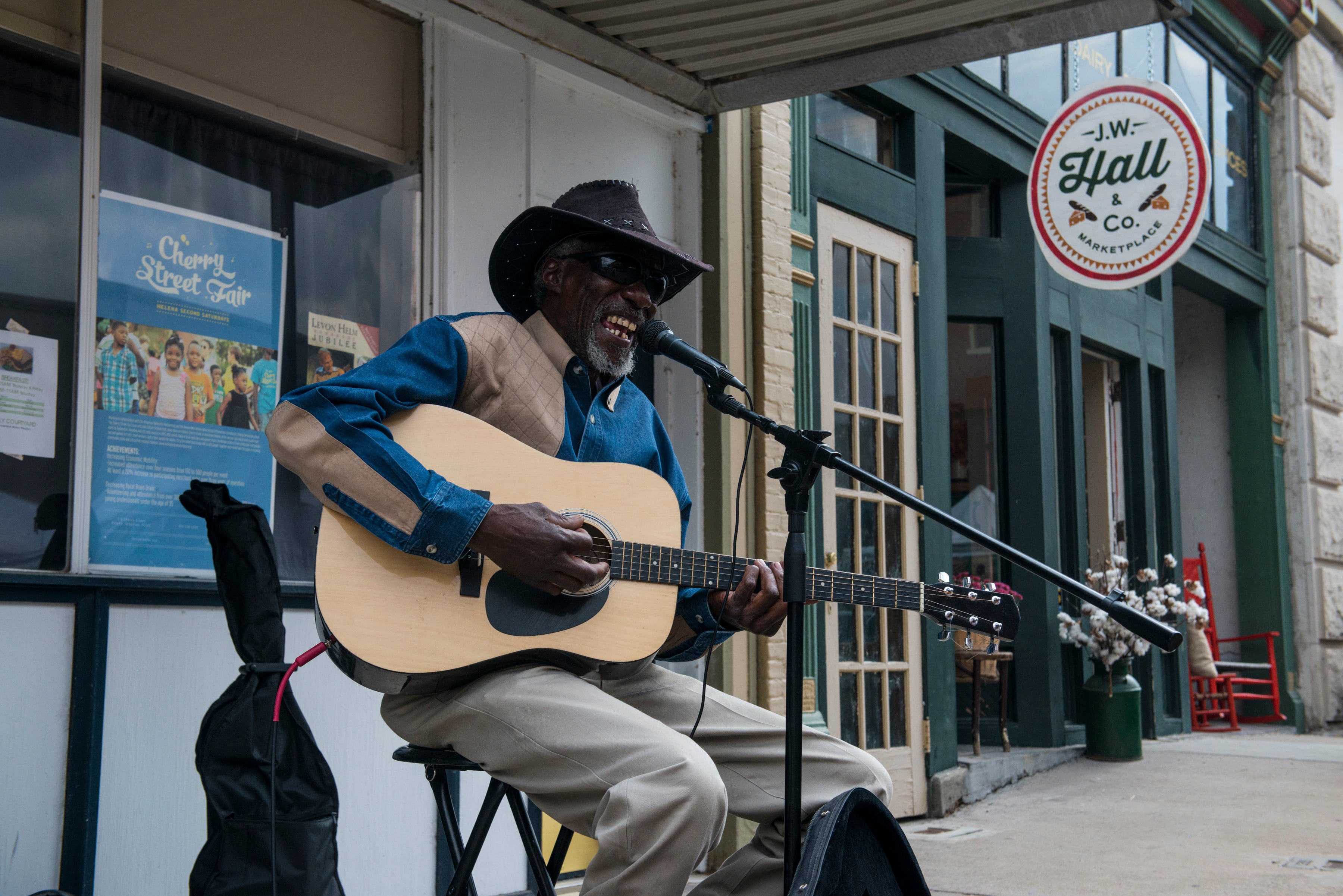
Little Rock
The house was purchased and built in 1955 by L.C. and Daisy Bates, Owners/publishers of The "Arkansas StatePress" which championed the rights of 9 Black Students to attend Central High School. The house was the virtual "command Post" for the army of people; military and civilians, engaged in bringing about the racial integration of Little Rock Central High School. The "Army of People" referenced above included members of The 82nd Airborne Division, neighbors, national and international media, The 9 Students and their parents, Civil Rights giants such as Attorneys Thurgood Marshall and Wiley Branton, SR. and The Reverends Dr. Martin King, Jr. and Rufus K. Young, SR.
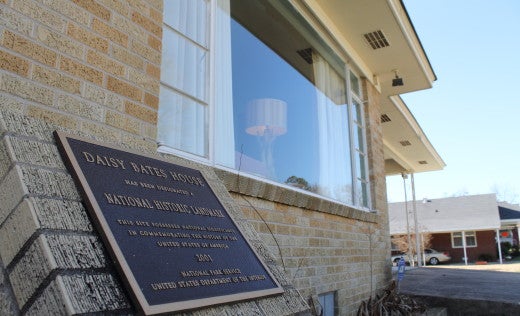
Russellville
Thirty-one Arkansas state parks provide campgrounds. Campsite choices range from primitive hike-in tent sites to those with water, electric and sewer hookups. Located throughout the state, the parks showcase the diversity of Arkansas’ geography and scenery. Campsites are available by reservation or on a first come basis. Reservations can be made at each park in person and by telephone, or booked online at www.ArkansasStateParks.com. A non-refundable reservation fee is required to confirm campsite reservation. A nightly fee is charged per site. It is necessary to register at the park visitor center before occupying a campsite. Pets are allowed in campgrounds but must remain on leash.
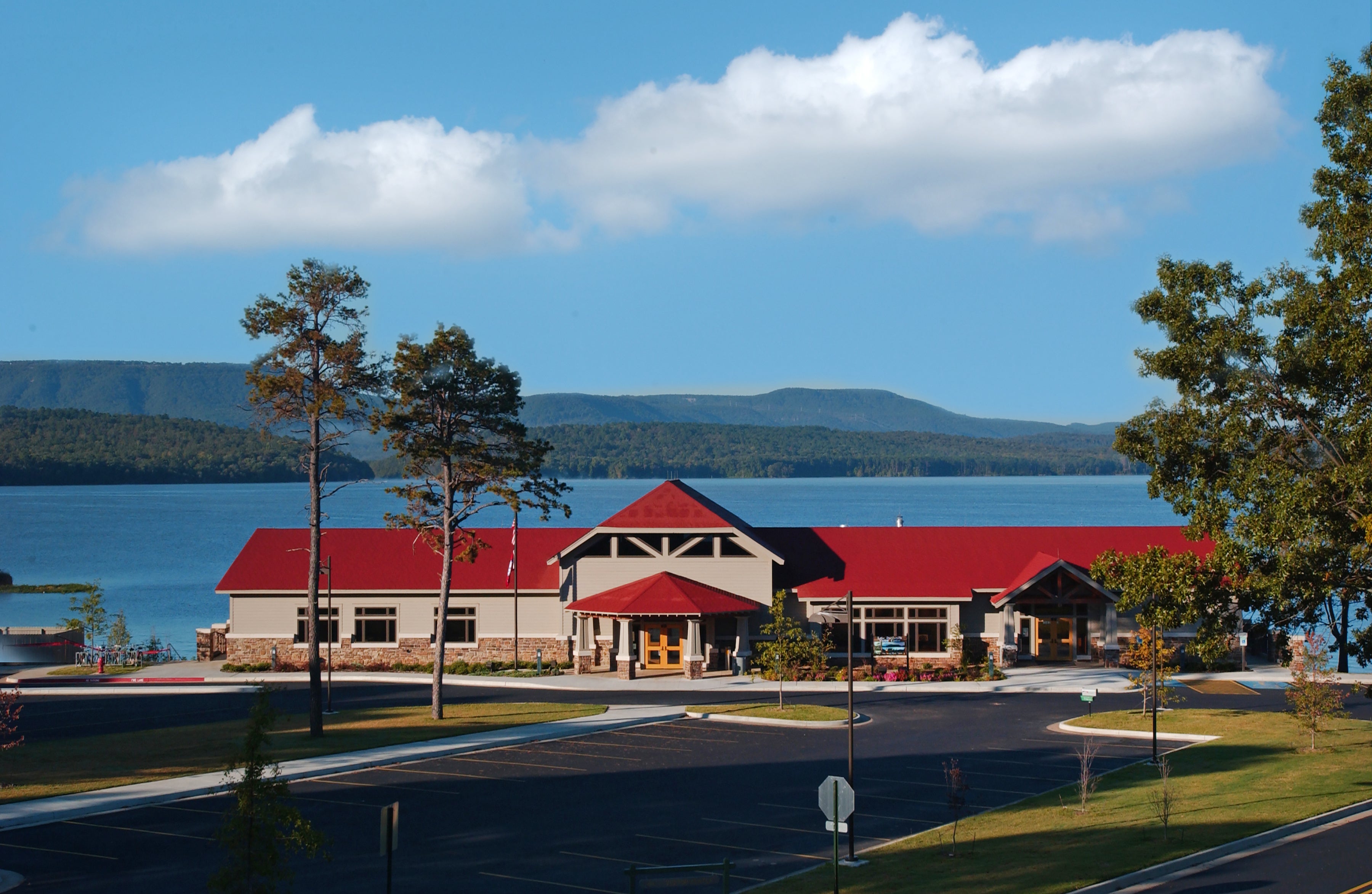
Little Rock
The center opened Sept. 24, 2007 coinciding with the 50th anniversary of the 1957 desegregation crisis. Features 3,000-square-feet of permanent exhibits covering the 1957 events that took place at Central High School and its role, along with the Little Rock Nine, in the greater civil rights movements in the U.S.; audio/visual and interactive programs; bookstore. The former visitor center, a restored Mobil Service Station, is now used for special programs.
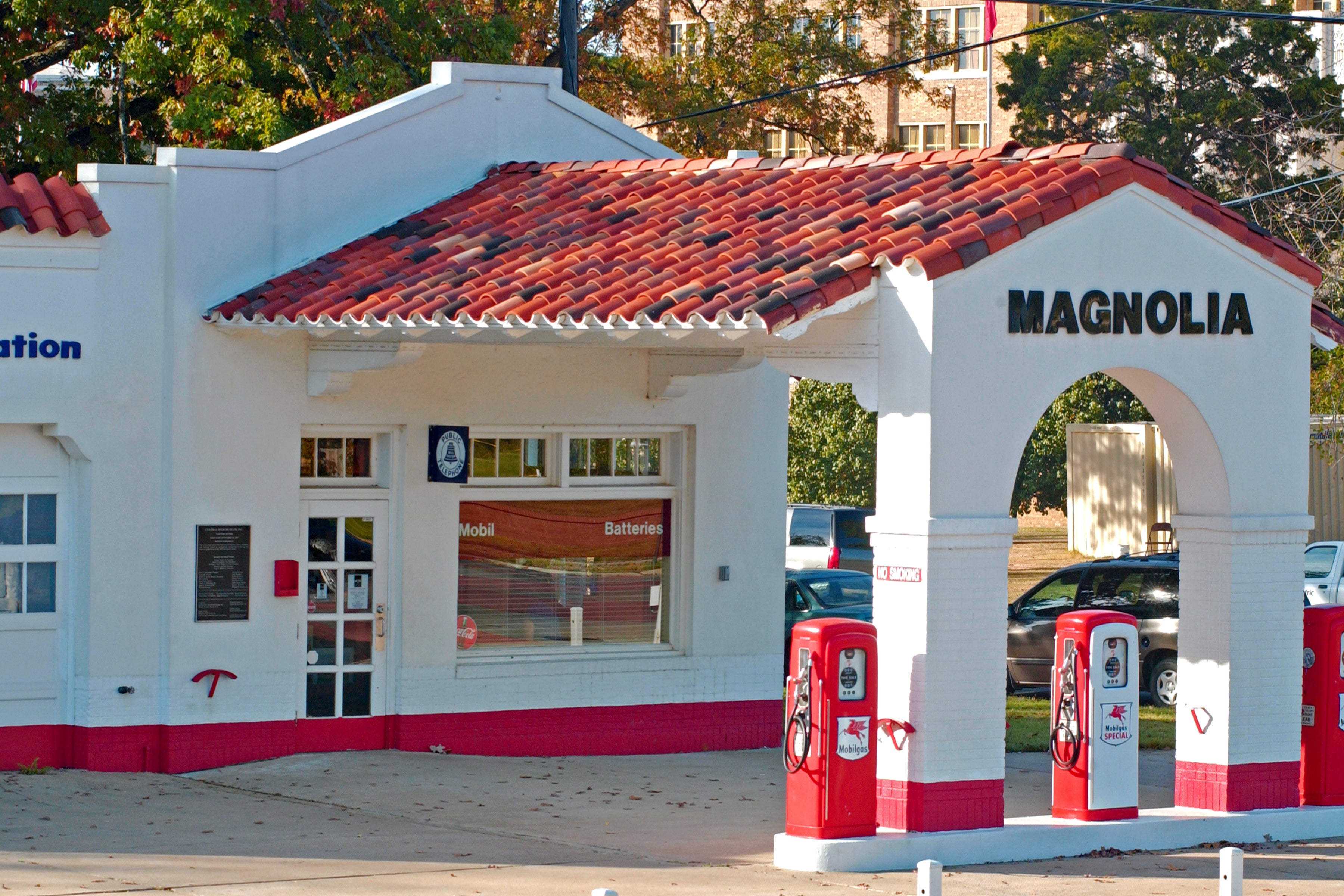
Little Rock
Located in the historic tower building of the Old Arsenal, a National Historic Landmark. Birthplace of General Douglas MacArthur in 1880, the building now houses a museum of Arkansas' military heritage from Territorial days to present. World War II exhibits include the Allison Collection, over 400 original photos, and the role of the Jeep during the war. An Arkansas Civil War Sesquicentennial Historical Marker is located on the museum grounds. Civil War exhibits include the Camden Campaign and David O. Dodd, boy martyr of the Confederacy.

Little Rock
The Mosaic Templars of America organization was founded in Little Rock in 1882 as a fraternal organization by John E. Bush and Chester W. Keatts. The reconstructed museum is dedicated to collecting, preserving, interpreting and celebrating Arkansas' African American culture and community from 1870 to present. It also informs and educates the public about Black achievement -- especially in business, politics and the arts. The third floor auditorium will be host to performing arts productions, conferences and public symposiums. The center has more than 8,000-square-feet of interactive exhibit and education space. Houses the Arkansas Black Hall of Fame. Special events held throughout the year.

Mount Olive United Methodist Church
Van Buren
Constructed by emancipated slaves in 1889, this church is said to consist of the oldest Black congregation of the UMC system west of the Mississippi; driving tour only. Listed on the National Register of Historic Places.
North Little Rock
Located on the north side of the Arkansas River, this park offers picturesque views, lighted walkways and a jogging/fitness trail. North River Landing off I-30 near the Broadway exit is a large boat launching ramp. It is a part of the Arkansas River Trail which connects to the Junction Bridge Pedestrian & Bicycling Bridge. Seven interpretive panels commemorating the Cherokee Trail of Tears and similar forced migrations by the other Four Civilized Tribes are located along the path. The site is located in the immediate vicinity of a large number of (north-south) land migration routes and (east-west) water migration routes for the Cherokee and other southeastern tribes during the 1830s and 1840s.

Little Rock
Built in 1836, the Old State House was the state's original capitol until 1911 and served as the seat of both the Confederate and Unionists governments in Arkansas during the Civil War. It was also the site of the 1861 secession convention. Union General Frederick Steele quartered his army here during the occupation. A memorial to young Confederate spy David O. Dodd stands on the grounds. It is now a museum of Arkansas history featuring permanent and changing exhibits and restored legislative chambers. Exhibits include First Ladies' Gowns, African-American Quilts, Civil War Battle Flags and Arkansas Art Pottery.
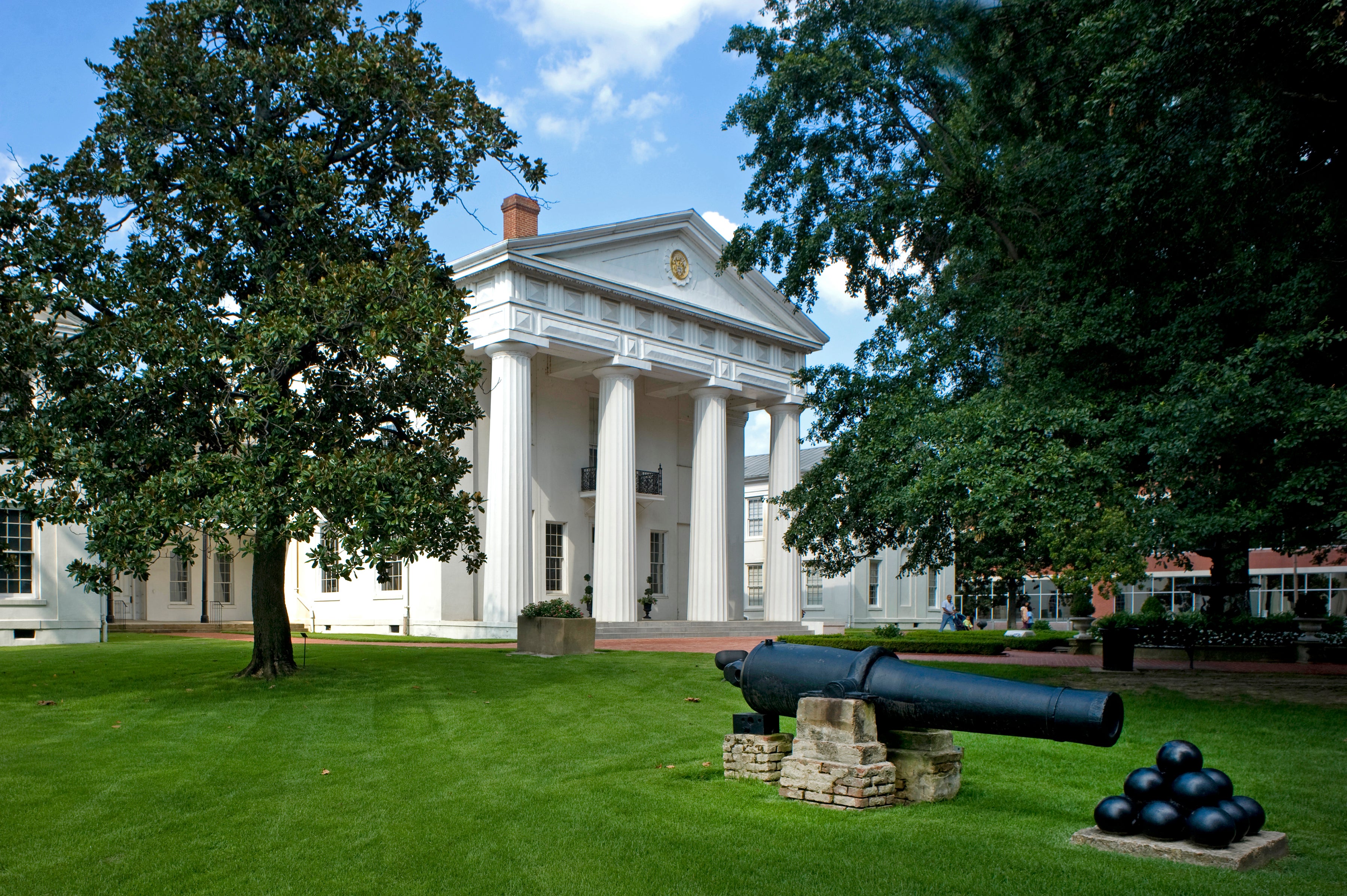
Scott
Interprets cotton agriculture in Arkansas from statehood in 1836 through World War II, when agricultural practices quickly became mechanized; Museum depicts how cotton was grown, picked and processed; Restored 1920s gin shows the ginning and bailing process, including full-sized mules and wagon on the scales; Seed Warehouse #5 and exhibits tell the story of the Robert L. Dortch's seed business.
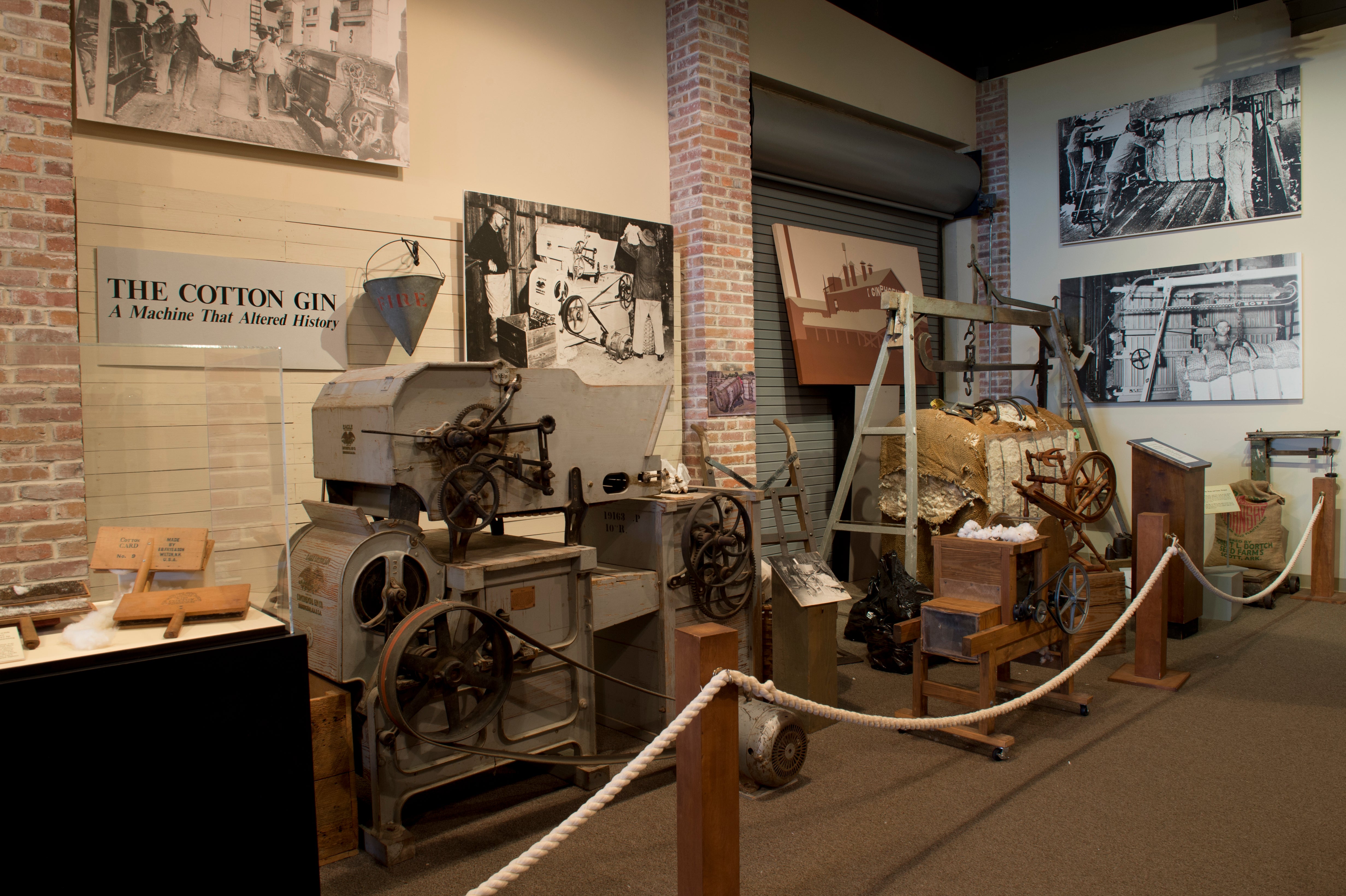
Rohwer
Site of a Japanese-American Relocation Center from 1941-1945; Japanese-American citizens from California were interned here; markers highlighted with narrative by actor George Takei, of Star Trek fame, who lived there as a child; cemetery highlighted by two monuments; smokestack from original laundry; listed on the National Register of Historic Places; a National Historic Landmark.
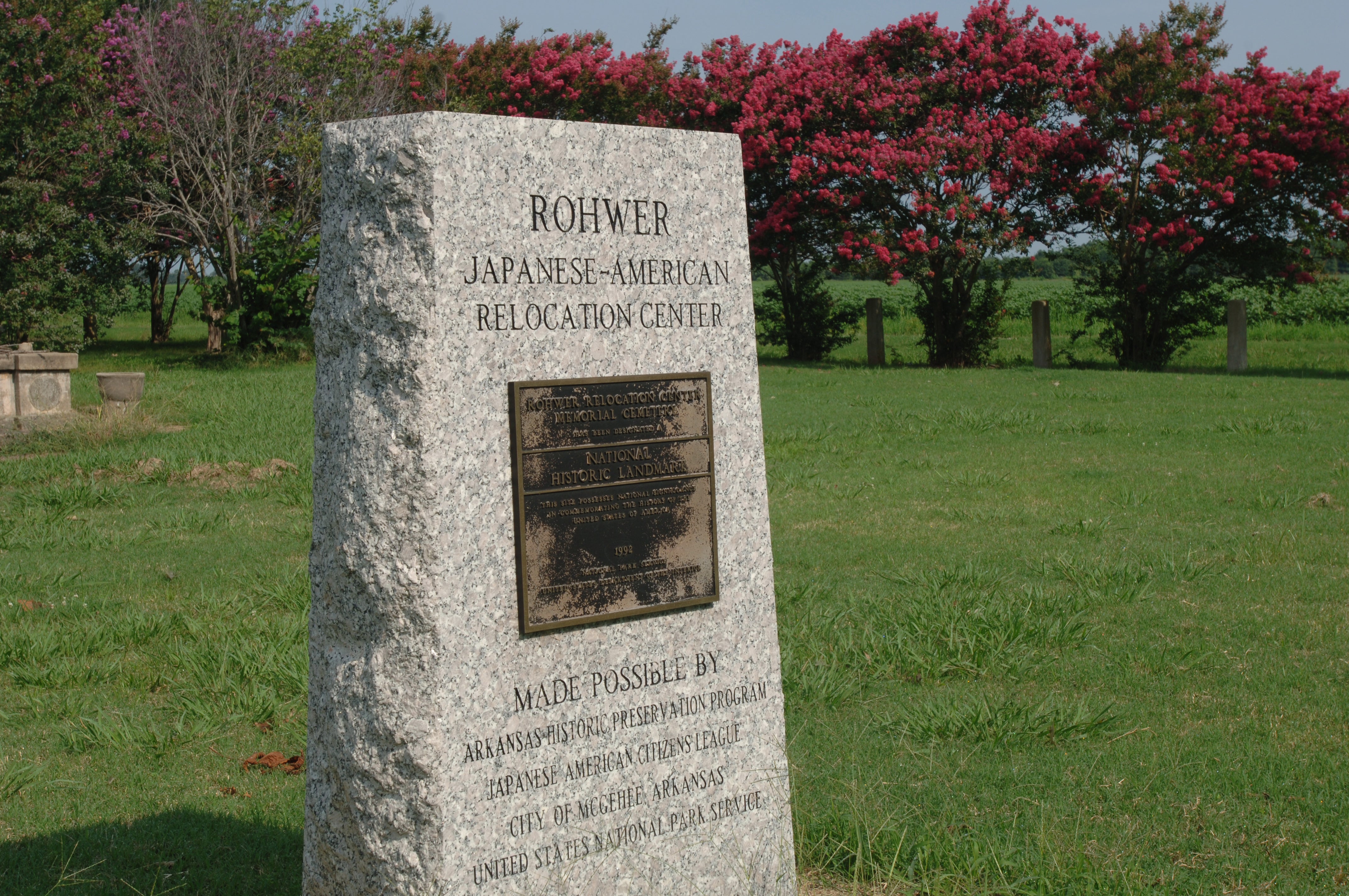
Texarkana
A large mural depicts the life and accomplishments of native son and Pulitzer Prize winning composer Scott Joplin, "The Father of Ragtime Music." While attending the Orr School in Texarkana, Joplin formulated many of his most successful ideas and compositions. He became famous for "The Entertainer," written in 1902, which was introduced to a whole new generation when used in the 1973 movie “The Sting.” His sophisticated piano compositions have only recently begun to be fully appreciated, and as a result, many revivals of his works have been staged and recorded.
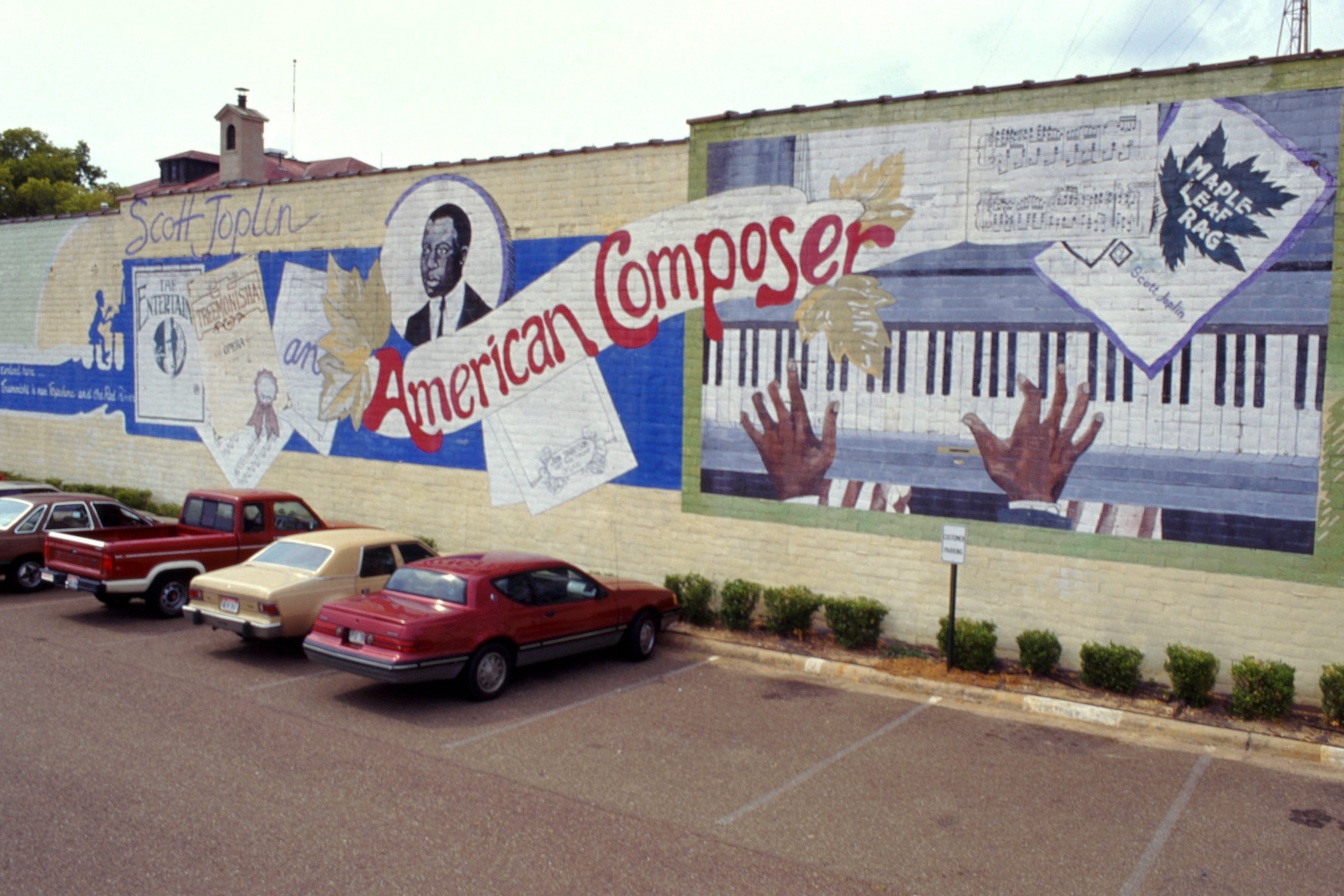
Sequoyah National Research Center
Little Rock
Located on the University of Arkansas at Little Rock campus, the center is the largest assemblage of Native American expression in the world. Searchable, on-line archives and library catalogs; mission of the program is to acquire and preserve the writings and ideas of Native North Americans. Open to the public Monday-Friday, 8 a.m.-5 p.m. Trail of Tears Park is 4.5 acres planted with native trees, grasses, and other species that travelers along the trail might have seen and experienced.
Tyronza
The historic Mitchell-East Building and adjacent former bank include photographs, oral history, and artifacts focusing on the farm labor movement in the South and the tenant farming system of agriculture. During the early 1930s, the building housed the businesses of H. L. Mitchell and Clay East, two of the principal founders of the Southern Tenant Farmers' Union. This national union established July 13, 1934, in Tyronza by 11 whites and seven blacks conducted much of its business at the Mitchell-East Building. The organization, which included women and blacks in leadership positions alongside white males, is regarded as a forerunner of the 1960s civil rights movement. Home of the Tyronza seasonal Farmers Market.
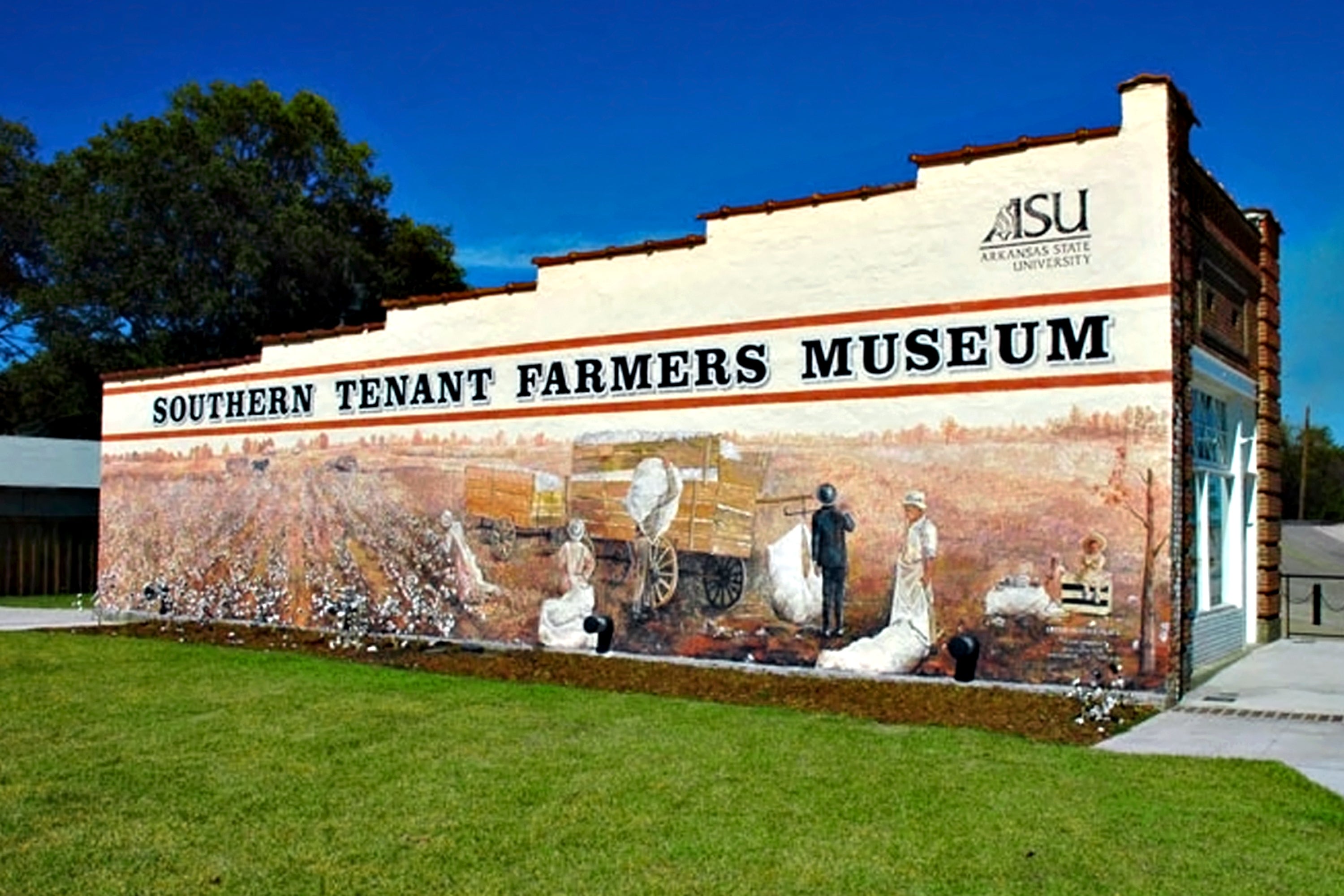
Little Rock
Pays homage to the Little Rock Nine who integrated Little Rock Central High School in 1957. These nine African American students – Melba Pattillo, Elizabeth Eckford, Ernest Green, Gloria Ray, Carlotta Walls, Terrence Roberts, Jefferson Thomas, Minnijean Brown and Thelma Mothershed -- are now immortalized in a striking memorial located on the grounds of the Arkansas State Capitol in Little Rock. A comment from each of The Nine is found on individual bronze plaques identifying which student is which.
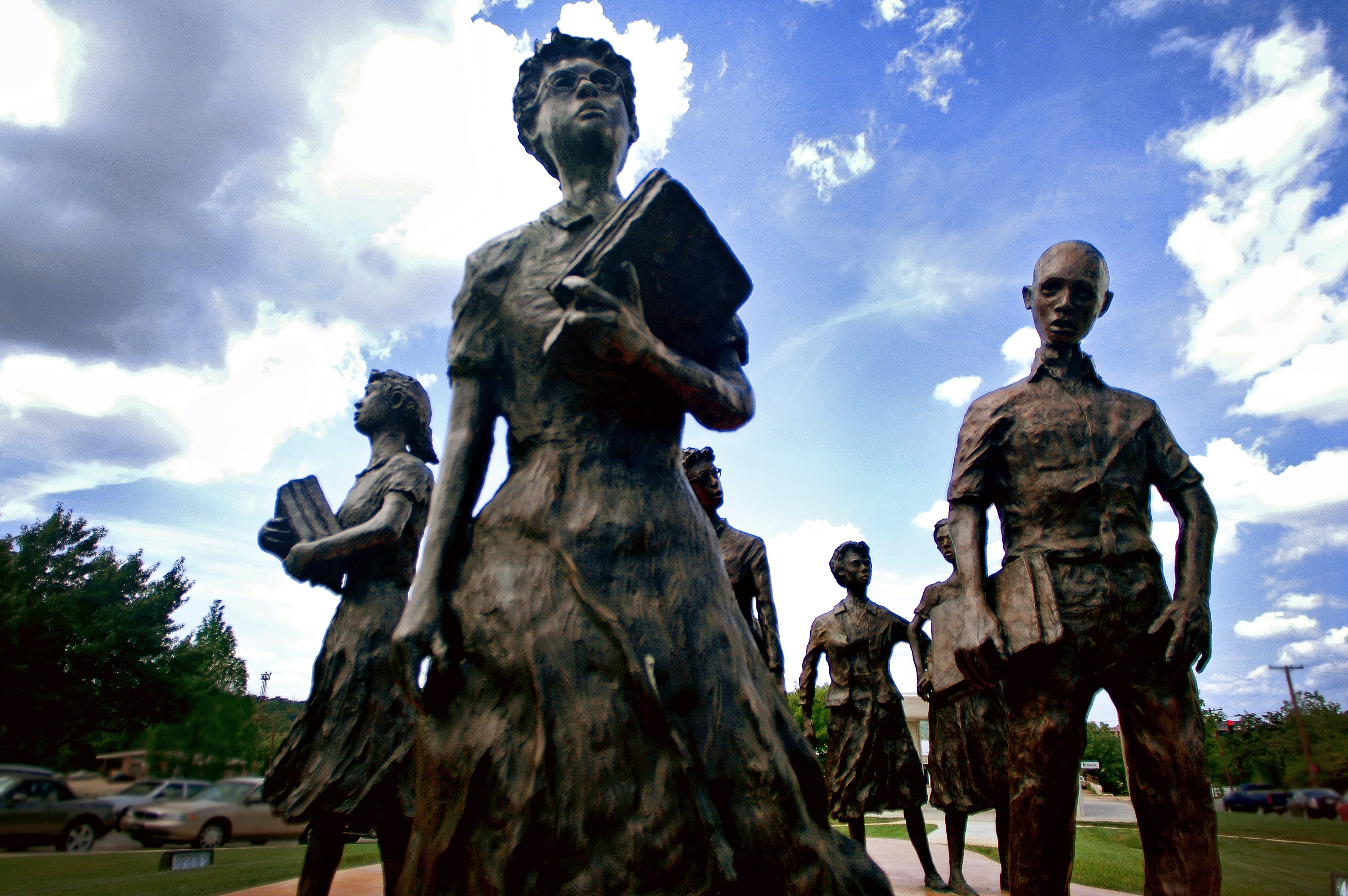
UAFS Drennen-Scott House Historical Museum
Van Buren
Original home of John Drennen and passed down through 5 generations of the same family. Now a museum and “working laboratory” for university students as they interpret furnishings dating from the 1700s. Structure is linked to the Trail of Tears, the Underground Railroad and the Civil War.
Wynne
Two fishing lakes, modern cabins, campgrounds, visitor center, horse camp with stalls, multi-use trails, an Andy Dye-designed golf course and recreation opportunities are the hallmarks of this 7,000-acre park. Ark. 284 between Wynne and Forrest City.

World War II Japanese American Internment Museum
McGehee
After entering World War II, Pres. Franklin Roosevelt created the War Relocation Authority, resulting in 10 incarceration sites for Japanese-Americans for national security. Rohwer and Jerome (Drew County), established in March 1942, were the WRA’s easternmost camps. The two would eventually house over 17,000 people. Rohwer, northeast of McGehee, opened Sept. 18, 1942, closed Nov. 30, 1945, was one of the last to cease operation. Remains include several commemorative markers and small cemetery. Listed on the National Register of Historic Places; a National Historic Landmark. Permanent home of “Against Their Will,” an exhibit about those interned at Jerome and Rohwer; located inside the McGehee Depot. Actor George Takei (Star Trek) lived at Rohwer as a small child.
